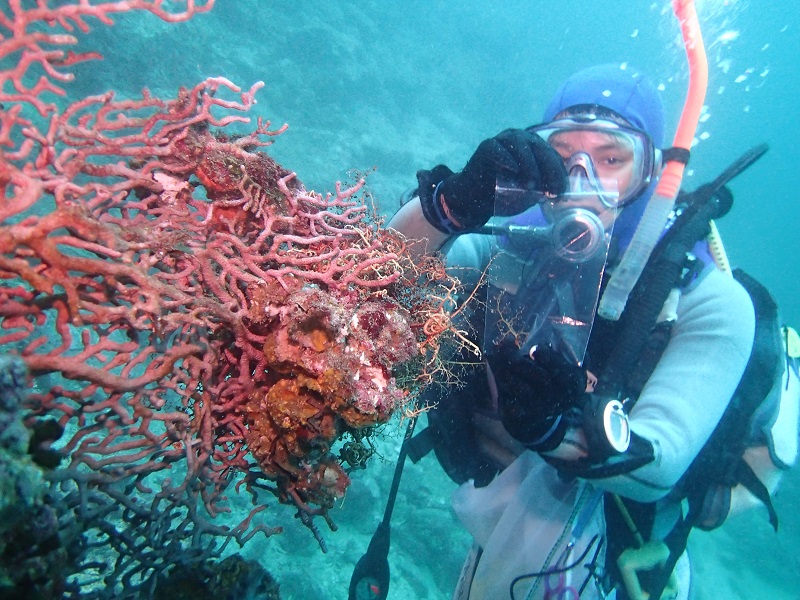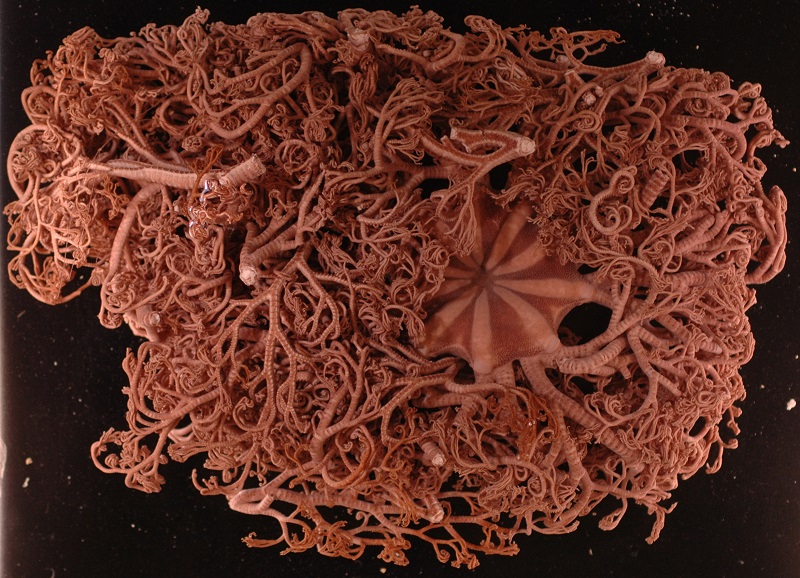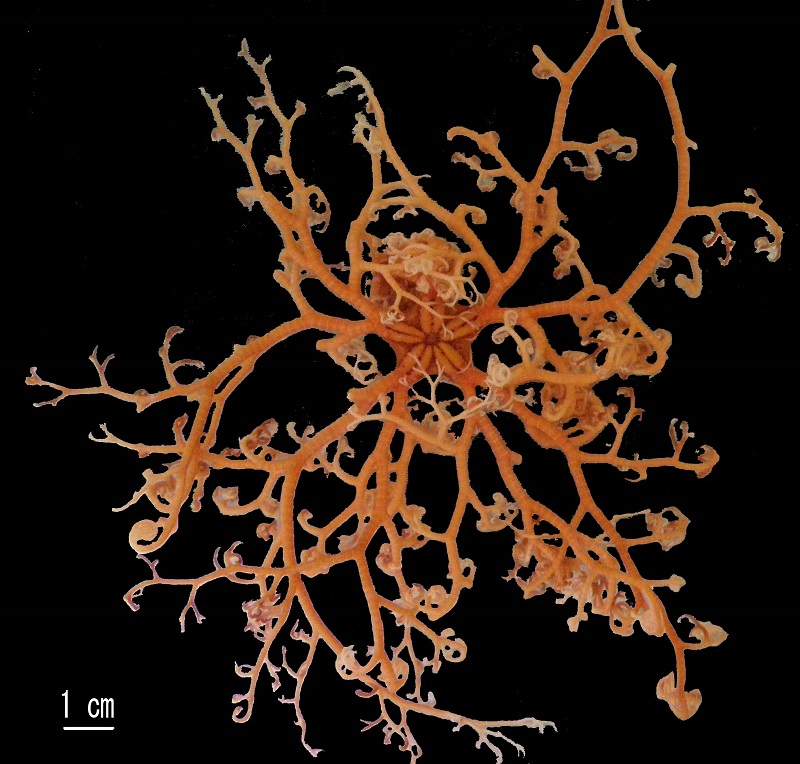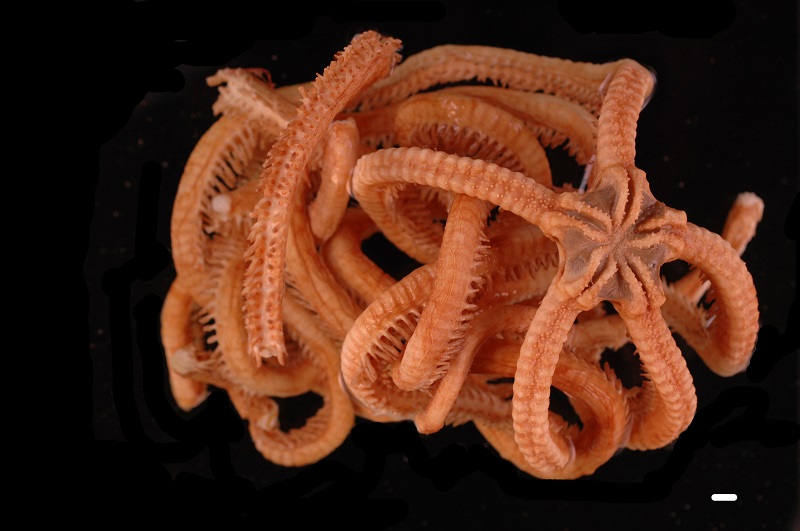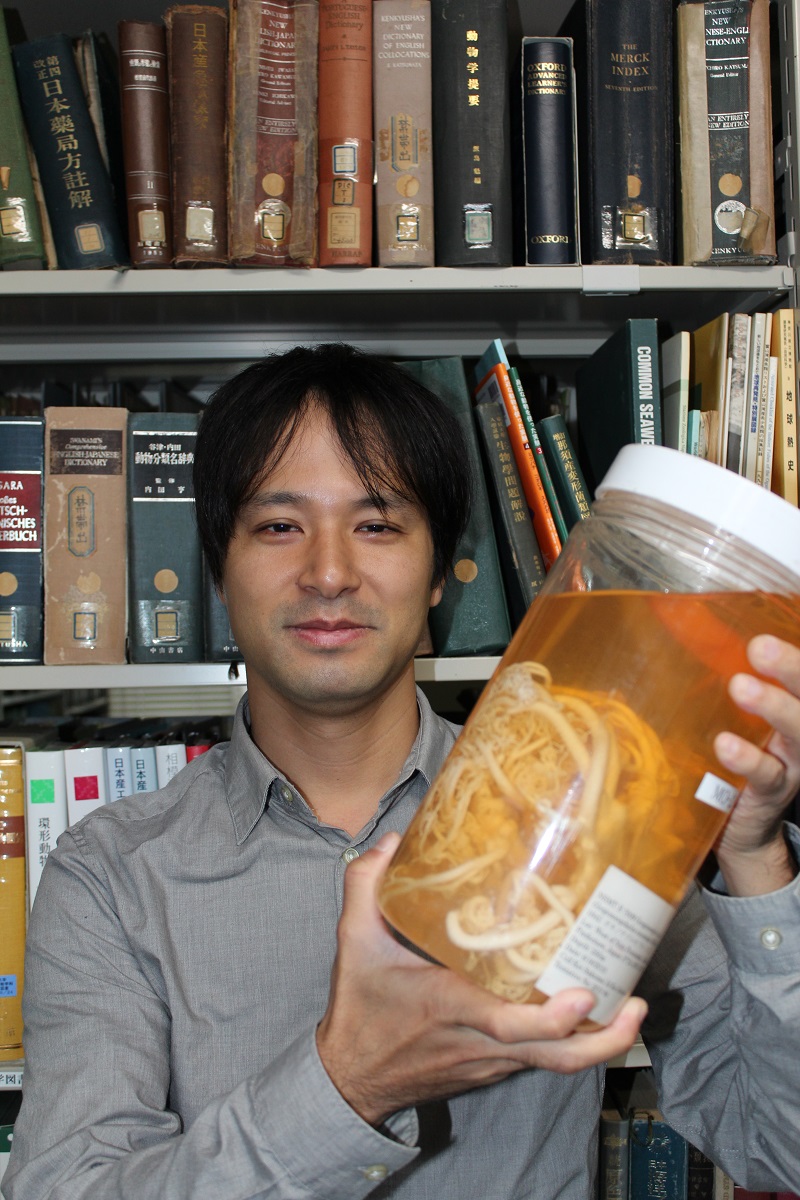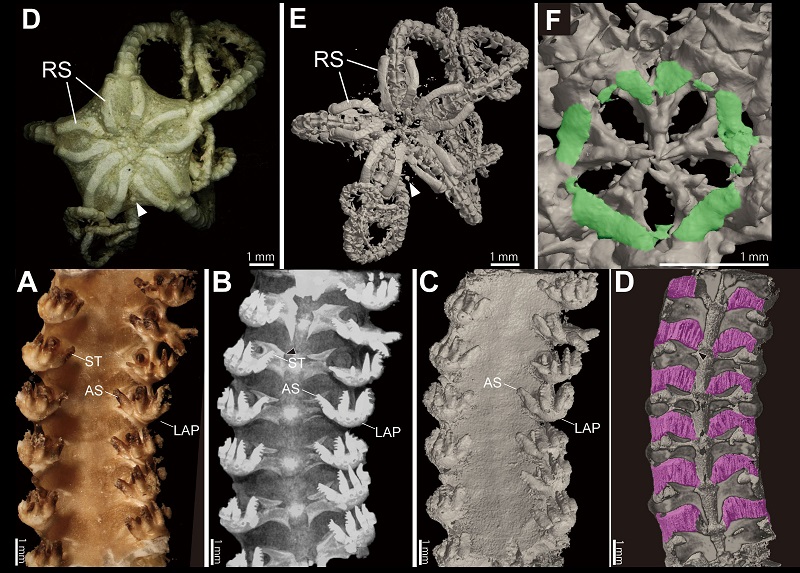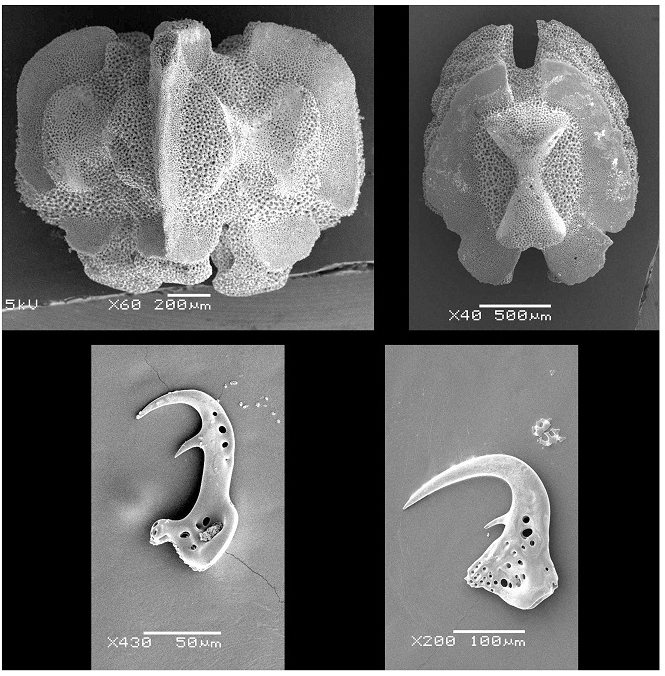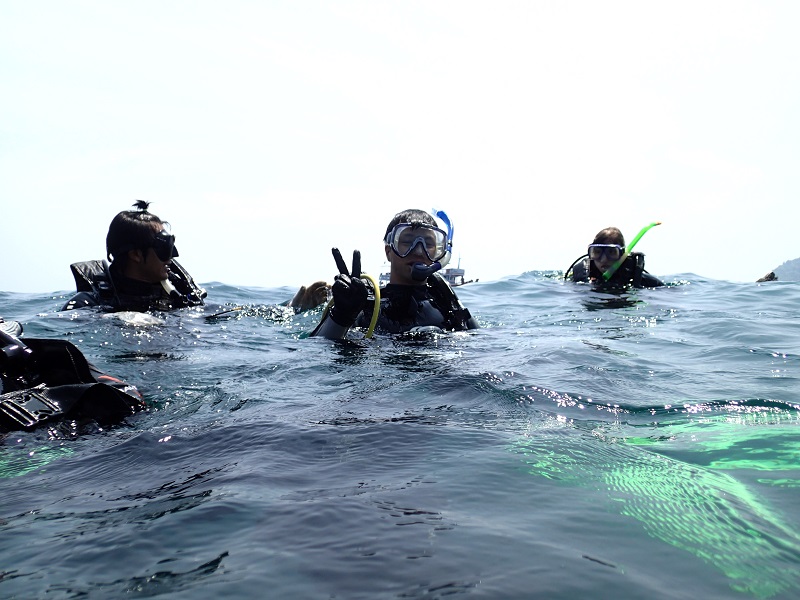Brittle and basket stars for the International Day of Biological Diversity Marine taxonomist identifies new species

May 22, 2018 is the International Day for Biological Diversity. Celebrate the variety of species around you and see some of the new species identified by University of Tokyo marine taxonomy researcher Project Assistant Professor Masanori Okanishi, based at Misaki Marine Biological Station, a University of Tokyo marine research station in Kanagawa Prefecture, Japan.
Project Assistant Professor Masanori Okanishi is an expert in brittle and basket star taxonomy. In this photo, he collects a specimen of a basket star, Astroglymma sculpta in Kochi Prefecture in 2015. "As a child, I was fascinated by mysterious, unidentified animals like the Loch Ness Monster, Ogopogo, and Bigfoot. In my second year of university, I learned about the specialty of taxonomy and decided that this would be my career, finding and identifying new creatures."
© 2018 Masato Hirose.
Basket stars mainly live approximately 100 to 2,000 meters deep in the ocean all over the world. Whenever one arm of a basket star breaks, it regenerates into multiple new arms. Basket stars and brittle stars move by wriggling their arms. They eat planktonic creatures and dead material from the ocean floor. Project Assistant Professor Masanori Okanishi co-published a paper in early 2018 identifying this new species of basket star, Astrodendrum spinulosum. Okanishi studied 11 specimens of this species to write the official species description. Citation: http://www.mapress.com/j/zt/article/view/zootaxa.4392.2.4/13992
© 2018 Masanori Okanishi.
This is Astroglymma sculpta, a basket star collected 30 meters deep off of Wakayama Prefecture, south of Osaka, in 2009. Scientific studies that identify new species include detailed descriptions that can be used to tell apart similar species. Taxonomists like Project Assistant Professor Masanori Okanishi build mental encyclopedias of these descriptions that they rely on during field trips or when examining museum specimens. "My first reaction when I find a new species is not a specific thought, but just a feeling that I have not read about nor seen this before," says Okanishi.
© 2018 Masanori Okanishi.
Some species of brittle stars, related to basket stars, are called snake stars because of how they move their flexible arms. When a brittle star arm breaks, it regenerates a single new arm (unlike the multiple, forked regenerations by in basket stars). This is Ophiocreas spinulosus, a brittle star collected in 1998 and part of Project Assistant Professor Masanori Okanishi's research.
© 2018 Masanori Okanishi.
The left image is a brittle star Ophiozonella cavernalis in its natural habitat near the Ryukyu Islands (including Okinawa) in southwestern Japan taken by Professor Yoshihisa Fujita (Okinawa Prefectural University of Arts) in May 2017, a research study to which Project Assistant Professor Masanori Okanishi contributed. The right image is a research photo of the same species in the laboratory. This research trip was the first time researchers found brittle stars living in submarine caves from the Pacific Ocean. The specimens were collected 8 to 27 meters deep. The "cavernalis" species names were inspired by the species cave-dwelling habits. Research originally published in Zootaxa journal http://www.mapress.com/j/zt/article/view/zootaxa.4377.1.1/13629
© 2018 Zootaxa.
Project Assistant Professor Masanori Okanishi holds a specimen at the Misaki Marine Laboratory, the University of Tokyo. Okanishi estimates that scientists identify approximately 10,000 new species every year, maybe 30 to 40 of which are new brittle star species. "It is not rare to discover new species, but it is important to find them before they disappear. This urge to collect is why many taxonomists' laboratories are full of samples they will never have time to identify. Studying old and new specimens helps us understand modern and ancient environments."
© 2018 Masanori Okanishi.
Project Assistant Professor Masanori Okanishi helped create the first X-ray microcomputed tomography (microCT) images of any basket or brittle star. Traditional methods of examining the specimens involve dissolving flesh off of the bones so no soft tissues can be studied. MicroCT allows researchers to identify specimens without destroying them, leaving the possibility for future analysis. These are microCT images of Asteronyx loveni, the first such images created of any brittle star. Green color in highlights bones of the mouth ossicle (peristomial plates) and purple color highlights muscles. Research originally published in ZooKeys Journal http://www.mapress.com/j/zt/article/view/zootaxa.4377.1.1/13629
© 2018 ZooKeys Journal.
© 2018 Masanori Okanishi.
Project Assistant Professor Masanori Okanishi spends about 30 days per year on field research trips around the Pacific Ocean. "I was first fascinated by brittle and basket stars because their bodies appear hard like crustaceans, but their movement is soft and flexible. There are not many scientists who specialize in these species, so I welcome new members to join our research groups and study biodiversity." Read more about Okanishi's work on his personal website: http://www.tezuru-mozuru.com/
© 2018 Masanori Okanishi.



